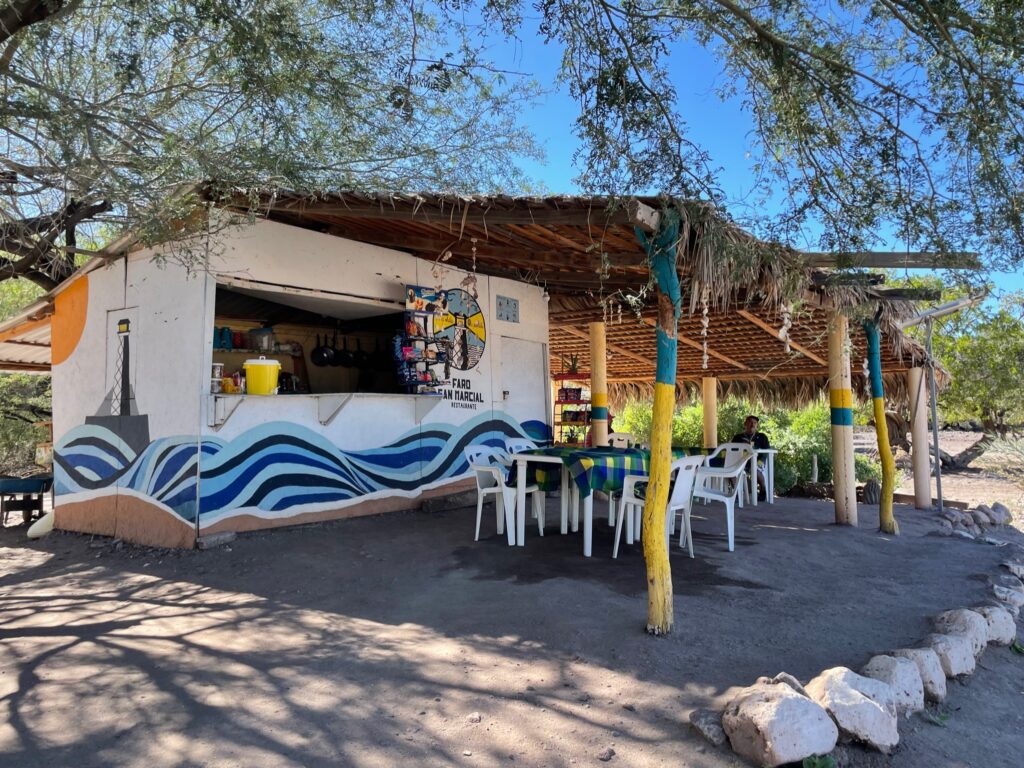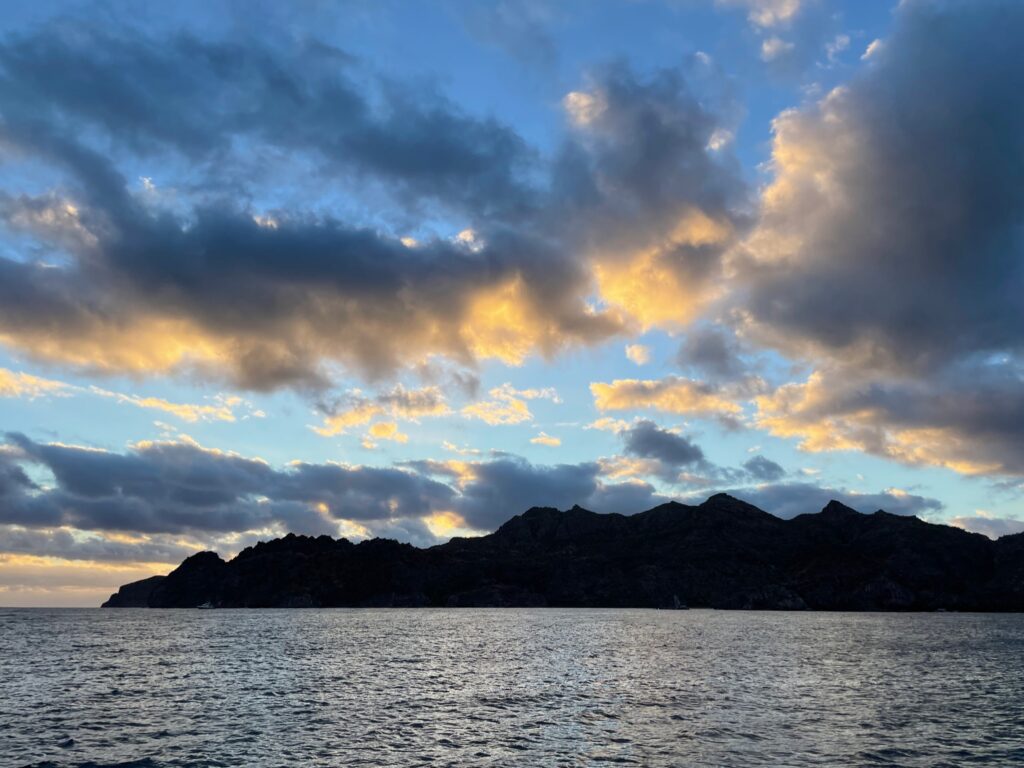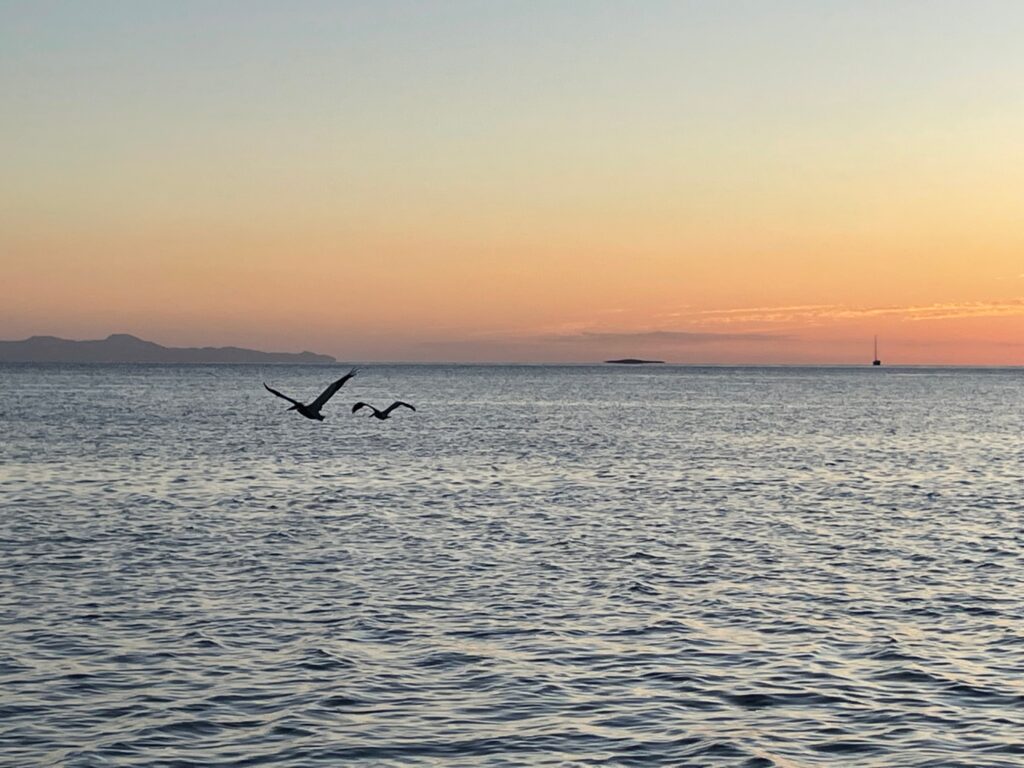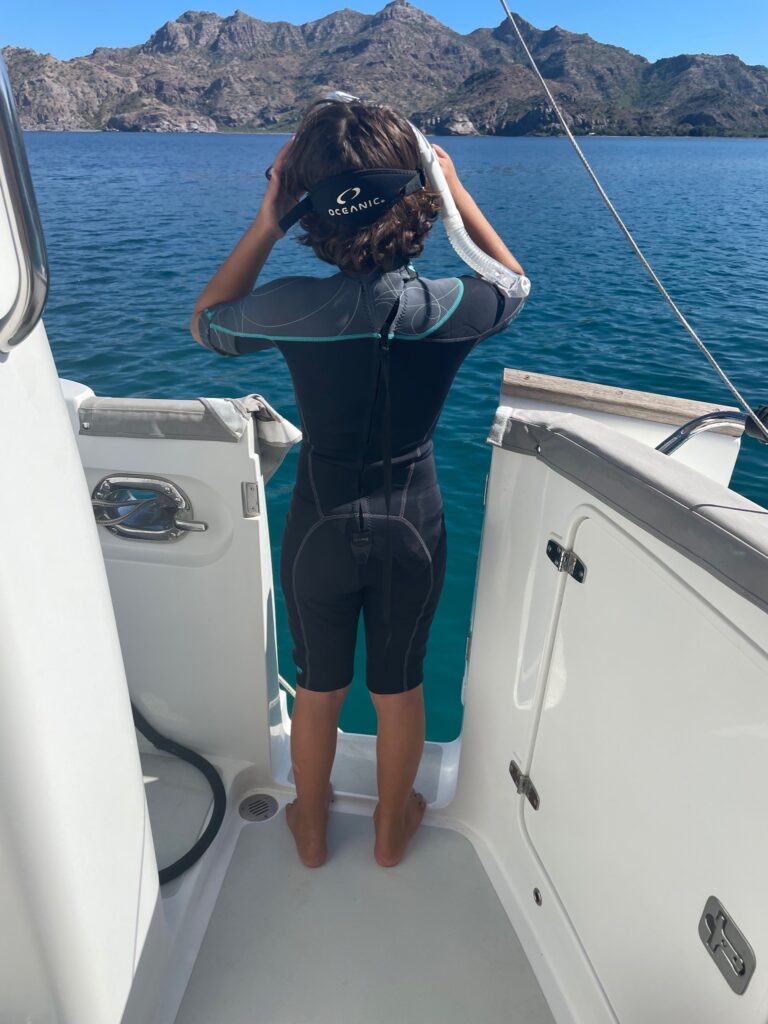On Sunday morning (November 6), we were not in a good mood when we woke up. As we’d mentioned in yesterday’s post, the motion in the anchorage was uncomfortable, and the discomfort lasted all night. None of us slept well.
The wind picked up again fairly early in the morning, this time coming from the south, where we had good protection from the swells. By mid-morning, the anchorage was calm enough that our moods improved.
The last few days we’d headed to the sand bar instead of the village because the sand bar was protected from the swell and safe to land at, while the village was exposed to the swell and dangerous to land at. With the swells gone, it was safe to go to the village again.
Our first stop was the restaurant at the end of the beach. It was owned by a husband and wife. The wife did all the cooking while the husband chatted with us. Thanks to our broken Spanish, we missed a lot of what he said, which was probably interesting and useful. Several people came and went. We sensed they were family members stopping by for a Sunday visit.






